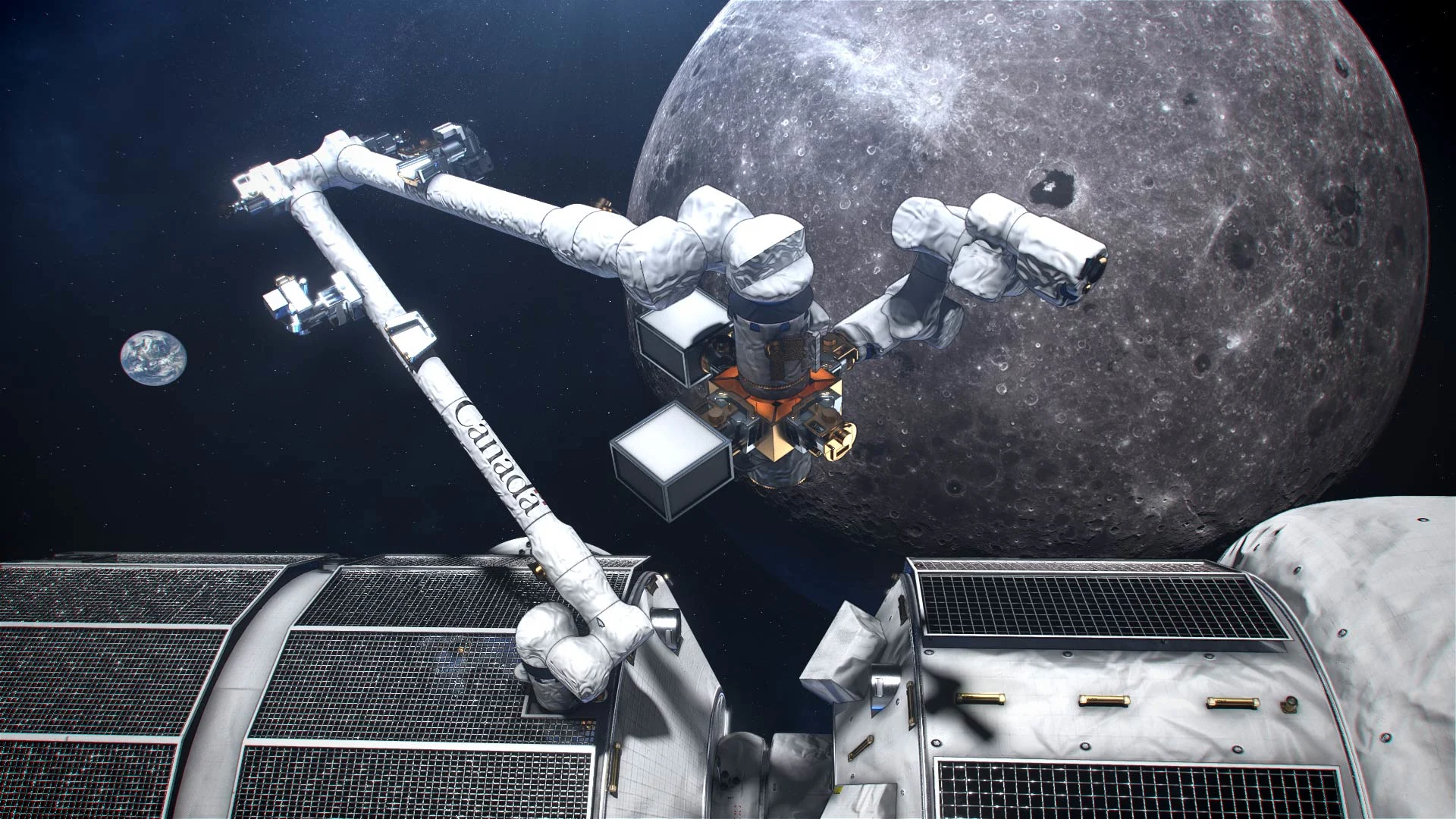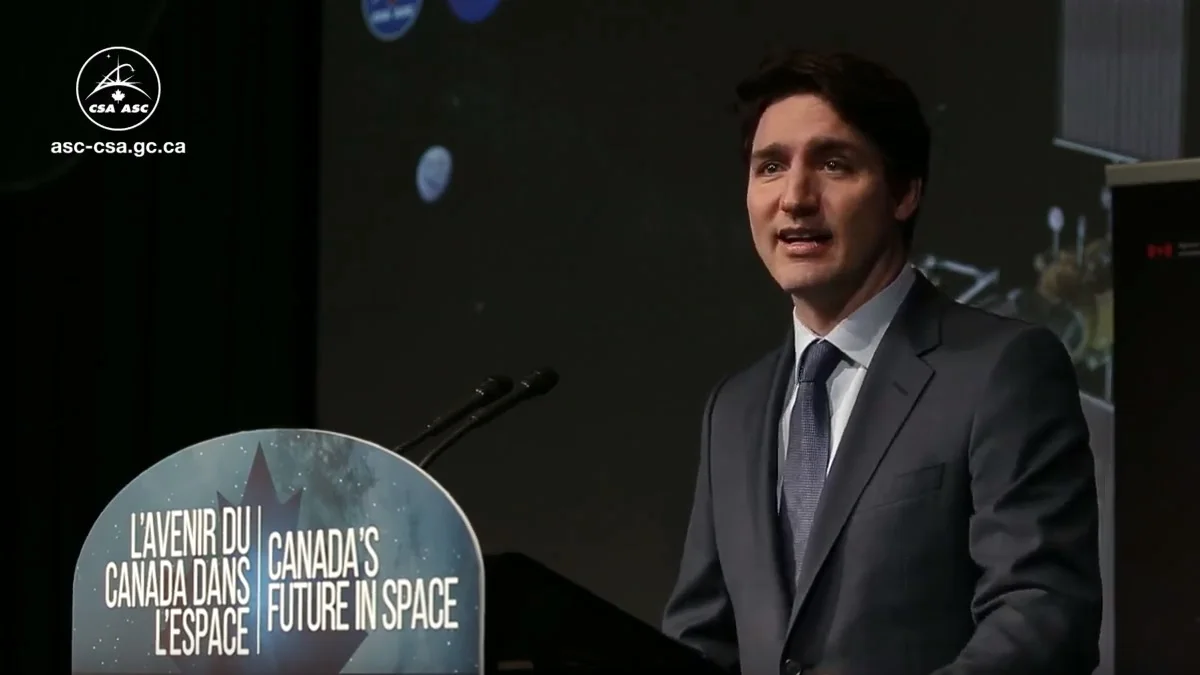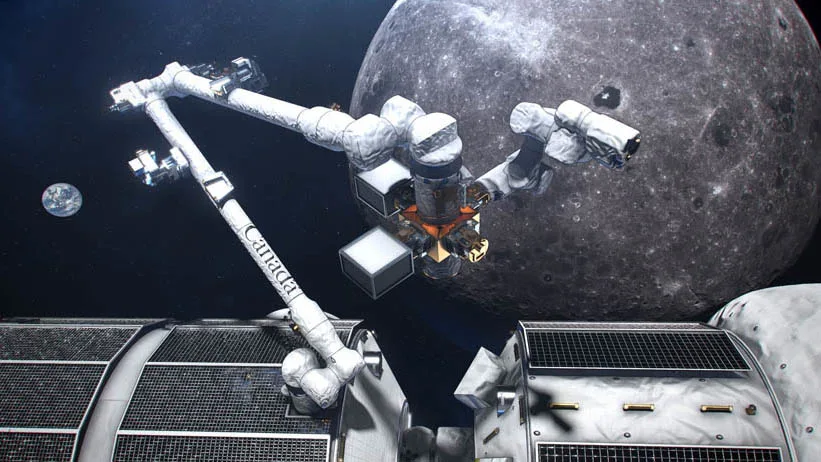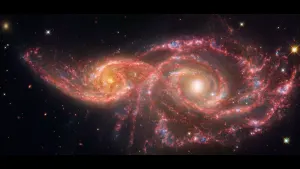
Canada heads to the moon: Groundbreaking plans unveiled
Prime Minister Justin Trudeau announced new investments in Canada's space industry, and pledges that a new Canadarm3 robotic arm will be part of the Lunar Gateway station.
Canada is going to the Moon!
It has been a long wait for news about the country's future commitments to space exploration, even prompting a popular social media campaign to pop up - #DontLetGoCanada - to remind the federal government to continue Canada's long history in space.
On Thursday, February 28, Prime Minister Justin Trudeau announced from the headquarters of the Canadian Space Agency, in Saint-Hubert, QC, that the Government of Canada will be investing over $2 billion in the nation's space program, over the next 24 years.

Prime Minister Justin Trudeau announces Canada's new space investments, from CSA headquarters, on Feb 28, 2019. Credit: CSA
This will include investments in new jobs, new companies, new innovations, and new technologies.
One of these new technologies will be a next-generation robotic arm, the Canadarm3, for the future Lunar Gateway station.
"Canada's historic investment will create good jobs for Canadians, keep our astronaut program running and our aerospace industry strong and growing, while opening up a new realm of possibilities for Canadian research and innovation," the Prime Minister said during the announcement.
"With the Lunar Gateway, Canada will play a major role in one of the most ambitious projects ever undertaken. Together, with our partners from around the world, we'll continue to push the boundaries of human ambition, and inspire generations of kids – and adults – to always aim higher and aspire to something greater."

This artist conception drawing shows the Canadarm3 attached to the Lunar Gateway station. Credit: NASA/CSA
According to the Canadian Space Agency, the Canadarm3 will perform the same role that the Canadarm2 currently fills on the International Space Station, by performing maintenance, supporting spacewalks, capturing and releasing visiting spacecraft, and conducting science experiments.
The biggest difference with this upgraded design is that the Canadarm3 will be a smart robotic system, capable of operating independently, to support operations of the lunar-orbiting station during those times when it will be uncrewed.
"The distance to the Lunar Gateway will require a level of autonomy never before seen in robotic and human exploration systems," the Prime Minister said. "Thanks to artificial intelligence and robotics, the Gateway will continue to operate when crews are not present."
A 'LEAP' FORWARD TO THE MOON
In addition to this new investment and commitment to the Lunar Gateway project, the Government of Canada is also launching LEAP - the Lunar Exploration Accelerator Program.
This new program will support efforts by businesses and schools, alike, to develop science experiments to be conducted on or above the Moon, to develop new technologies for lunar exploration and science, and investigate new medical technologies for use in deep space, which will also benefit us here on Earth.
FUTURE CANADIANS IN SPACE
Along with these other investments, the Prime Minister is also announcing a new investment in Canada's future space explorers, with the junior astronaut recruitment initiative, which will begin later this year.
This initiative is intended to inspire the next generation of Canadian astronauts, and to increase enthusiasm in Canada's youth to pursue careers in STEM - science, technology, engineering and mathematics.
According to the agency, top-performing participants will train with astronauts at the Canadian Space Agency headquarters.
CONTINUING A LONG HISTORY
Canada has a long history of developing technologies for space, including for some very high-profile missions, such as:
the Apollo lunar module landing legs,
the robotic Canadarm that supported 90 of the 135 Space Shuttle missions,
the upgraded Canadarm2 that built the International Space Station and continues to support the station, with its 'companion' Dextre, nearly two decades on,
spectrometers on the Spirit, Opportunity and Curiosity rovers that allowed these robotic geologists to perform their work on Mars,
a meteorological station on the Mars Phoenix lander, which spotted Martian snow for the first time, and
the laser altimeter on the OSIRIS-REx spacecraft, which is currently mapping the surface of asteroid Bennu.
Canadian scientists have also made important contributions to space missions, both past and present, not only in designing the technologies we send into space and to other worlds, but also in guiding and supporting the exploration of these far-off environments, and contributing to the scientific discoveries that result.
Sources: CSA | Government of Canada










